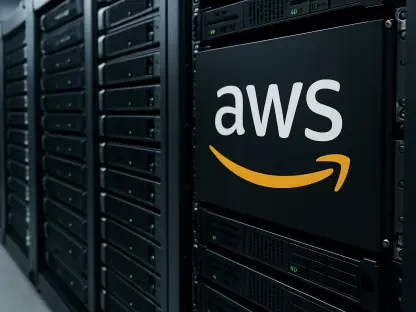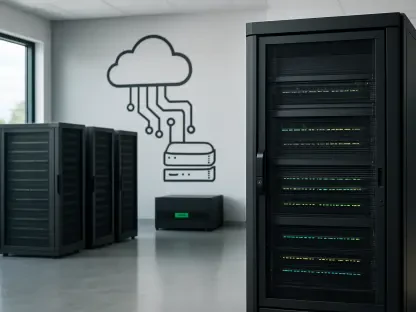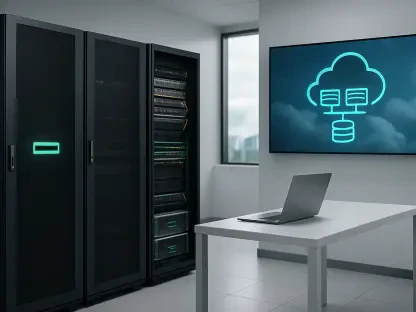Setting the Stage for Cybersecurity Innovation
In an era where cyber threats evolve at an alarming pace, security operations centers (SOCs) face mounting pressure to manage vast data volumes while maintaining agility in threat detection and response. A staggering reality is that many organizations spend up to 60% of their SOC resources on data handling rather than actionable defense, highlighting a critical inefficiency in the cybersecurity market. This challenge has spurred demand for solutions that streamline operations, reduce costs, and enhance performance, setting the stage for transformative innovations.
Axoflow, a US-based cybersecurity startup with European roots, has stepped into this gap with its recently unveiled Security Data Layer, launched from Stamford, Connecticut. This solution promises to redefine how SOCs operate by automating data management and offering flexible storage options. The introduction of such a platform signals a pivotal moment for the industry, prompting a deeper analysis of its implications for market trends and future growth.
This market analysis explores the broader impact of Axoflow’s offering on cybersecurity data management. It examines current patterns in SOC operations, evaluates emerging trends in data handling, and projects how such innovations could shape the competitive landscape. The focus is on understanding the strategic value of this development for organizations seeking to optimize security without escalating budgets.
Analyzing Market Trends in Cybersecurity Data Management
Rising Data Challenges and Operational Bottlenecks
The cybersecurity market has witnessed an exponential increase in data generation as digital transformation accelerates across industries. SOCs, tasked with safeguarding organizational assets, often grapple with disparate systems, inefficient log management, and the prohibitive costs of traditional Security Information and Event Management (SIEM) platforms. These challenges have created a bottleneck, where security teams spend disproportionate time on data preprocessing rather than threat mitigation, stifling operational efficiency.
Current market data indicates a growing frustration with monolithic SIEM setups that bind storage and analytics into rigid, expensive frameworks. Many enterprises report storage costs as a significant portion of their cybersecurity budget, with limited flexibility to scale or adapt to hybrid environments. This rigidity has fueled a demand for decoupled solutions that prioritize cost control and operational agility, a gap that innovative players are now targeting with specialized offerings.
The trend toward hybrid and cloud-native architectures further complicates the landscape. As organizations distribute workloads across on-premises and cloud systems, the need for unified data management becomes paramount. Solutions that can bridge these environments while reducing dependency on single vendors are gaining traction, reflecting a broader market shift toward flexibility and scalability in security operations.
Automation as a Market Differentiator
Automation has emerged as a critical driver in the cybersecurity market, addressing the labor-intensive nature of data handling in SOCs. The ability to automate tasks like data collection, normalization, and transformation across diverse environments is reshaping how security teams allocate resources. Market analysis suggests that platforms offering up to 70% faster investigations through automated workflows are poised to capture significant share, as they enable analysts to focus on high-priority threats.
This shift is not without hurdles, as integrating automation with legacy systems poses compatibility risks, and upskilling staff remains a concern for many organizations. Nevertheless, the potential to minimize human error and reduce operational overhead is a compelling value proposition. Companies that successfully embed automation into their offerings are likely to differentiate themselves in a crowded market, appealing to enterprises seeking efficiency without expanding headcount.
Beyond immediate operational gains, automation aligns with a growing preference for integrated platforms that streamline complex processes. As SOCs handle increasing data volumes, the market is tilting toward solutions that deliver actionable insights directly to analytics tools. This trend underscores a fundamental change in how security data is perceived—not as a burden, but as a strategic asset when managed effectively.
Storage Flexibility and Cost Optimization Trends
Storage solutions are undergoing a notable evolution in the cybersecurity sector, driven by the need for cost-effective and adaptable options. Traditional SIEM-tied storage models have long been criticized for their lack of scalability and high expense, often locking organizations into inflexible contracts. Market insights reveal a rising preference for tiered storage systems that balance accessibility with affordability, catering to both short-term and long-term data retention needs.
Innovations like edge storage for temporary data and tiered data lakes for cost-efficient archiving are gaining momentum. These solutions allow organizations to tailor storage to specific deployment scenarios, such as regulated or air-gapped environments, without compromising performance. The ability to decouple storage from SIEM systems also addresses vendor lock-in, a pervasive issue that has constrained market competition and driven up costs for end users.
Looking ahead, the adoption of hybrid cloud architectures is expected to further propel demand for versatile storage frameworks. Projections indicate that from 2025 to 2027, the market for independent storage solutions in cybersecurity could grow by over 30%, as enterprises prioritize scalability and cost control. While integration challenges persist, the economic benefits of optimized data handling—potentially reducing SIEM costs by over 50%—present a strong incentive for adoption.
Projecting the Future of SOC Data Management
Integration of AI and Edge Computing
The future of cybersecurity data management is increasingly tied to technological advancements like AI-driven analytics and edge computing. Market forecasts suggest that platforms incorporating localized AI model execution will become integral to SOC operations, enabling real-time threat detection at the source. This capability aligns with the growing emphasis on distributed environments, where processing data closer to its origin reduces latency and enhances responsiveness.
Edge computing, in particular, is set to redefine how security data is managed, especially for organizations with geographically dispersed operations. By supporting temporary storage and processing at the edge, the market is moving toward frameworks that minimize reliance on centralized systems. This trend is expected to accelerate as more enterprises adopt IoT and remote workforce models, necessitating robust data handling at the periphery.
Economic and regulatory pressures are also likely to shape future demand. As compliance requirements tighten globally, solutions offering localized analytics and selective data transmission will gain prominence. The market is poised for a surge in integrated platforms that balance speed, scale, and cost, with innovations in automation and AI playing a central role in preempting cyber risks over the next few years.
Shift Toward Decoupled and Scalable Architectures
A defining trend in the cybersecurity market is the shift toward decoupled architectures that separate storage from analytics tools. This approach not only mitigates vendor dependency but also empowers organizations to customize their security stack based on specific needs. Market analysis highlights a growing consensus that such flexibility is critical for SOCs navigating complex, hybrid environments in the coming years.
Projections for 2025 to 2028 indicate a steady rise in demand for scalable data management tools, as enterprises seek to future-proof their security operations. The ability to integrate with multiple platforms while maintaining cost efficiency will likely become a benchmark for competitive offerings. This evolution reflects a broader market recognition that rigid, one-size-fits-all solutions are ill-suited to the dynamic nature of modern cyber threats.
Furthermore, the emphasis on data quality—through mechanisms like policy-driven aggregation to improve signal-to-noise ratios—points to a maturing market focus on actionable outcomes. As SOCs prioritize relevant insights over raw data volume, platforms that enhance data relevance before it reaches analytics tools are expected to lead the way. This trend signals a transformative period for the industry, where efficiency and adaptability redefine success.
Reflecting on Market Implications and Strategic Steps
Looking back, the analysis of Axoflow’s Security Data Layer revealed a significant turning point for the cybersecurity market, addressing deep-seated inefficiencies in SOC data management. The platform’s emphasis on automation, flexible storage, and cost optimization mirrored broader industry demands for scalability and performance. Its impact underscored the growing necessity for solutions that allow security teams to pivot from logistical burdens to strategic defense.
The implications of these findings are clear: organizations must rethink their approach to security data handling to stay competitive. A key takeaway is the value of investing in automation to streamline operations, ensuring resources are directed toward threat response rather than data preparation. Additionally, adopting tiered storage models offers a practical way to manage costs while maintaining data accessibility across diverse environments.
Moving forward, enterprises should consider assessing their current data management gaps and exploring platforms that offer decoupled architectures for greater flexibility. Prioritizing staff training to adapt to automated workflows emerges as a critical step to maximize the benefits of such technologies. By focusing on actionable data delivery and scalable solutions, businesses can enhance their security posture, preparing for the evolving threat landscape with confidence and strategic foresight.









